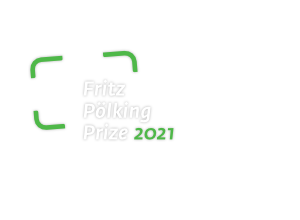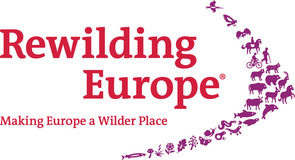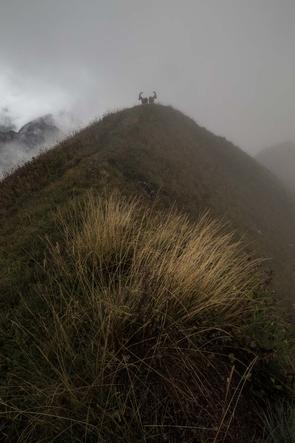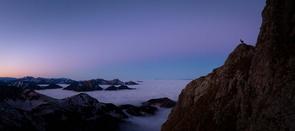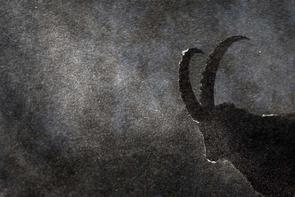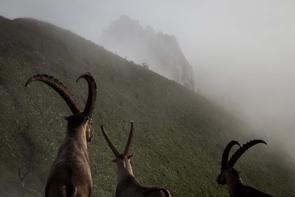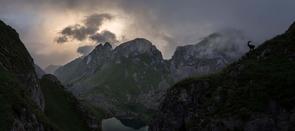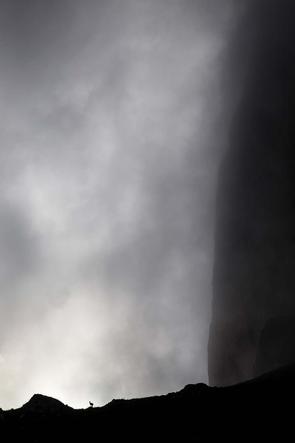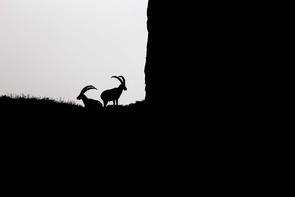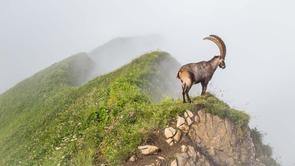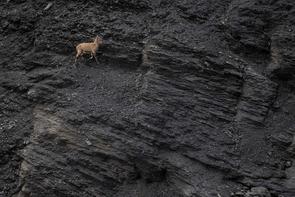Winner: Emile Séchaud – France
I spent my childhood in the Haute-Savoie region, whose diverse landscapes and especially wildlife inspired me from an early age. Later, attracted by untamed nature, I let myself drift off to faraway places where the dimension of wilderness is quite different from that in our Western European climes. When I go out into nature today, I try to find that sense of vastness and solitude as close to home as possible.
In a society where nature seems to have taken a back seat, photography provides me with an ideal medium to learn to take time again. Time to be forgotten, to listen, to observe or simply to marvel. Because in the wilderness, haste is not a quality. We live there in the rhythm that the earth imposes on us: that of the times of day and seasons, of the weather, of many imponderables. This contemplative approach is the basis for my photographs, whereby I prefer patient waiting to actually interacting with my subjects. In this way I can strive for a certain degree of authenticity and limit my impact on the fauna, which is already highly disturbed by human activity.
With my pictures I want to show above all that nature should be seen as a whole, as a perfect balance in which all elements are interdependent. For this reason, I prefer photographs that leave space for the animal and show important aspects of its environment. This approach also allows me to illustrate that the special beauty of an encounter with an animal derives equally from the creature itself as well as from the surroundings and the atmosphere of the moment.
Project: In the kingdom of the ibex
A true emblem of alpine fauna, the alpine ibex evokes admiration, especially on account of its ability to move along vertiginous rock faces and to survive in an environment as hostile to life as the high mountains. However, this does not mean it always had a privileged position in people's hearts, and in the 20th century it was on the verge of extinction as a result of intensive hunting. Great efforts were made to reintroduce the species in many mountain regions of the Alps to ensure the survival of these animals. Owing to these efforts, the king of the mountains can once again be admired in its majestic habitat, and this is how I wanted to show it in this portfolio. In the past years, I have visited various mountain regions in the French and Swiss Alps at all times of the year to show the diversity of the landscapes and the living conditions of these peaceful mammals. The images in this series are intended to illustrate how the mere presence of the ibex enhances the spectacular landscapes of the Alps and to remind us that this impressive spectacle almost disappeared only a few decades ago. To me, the lucky fate of the ibex seems like a glimmer of hope and a model for many endangered species that may make future generations dream, just as the ibex makes us dream in the Alps today.

1. A sheer drop
Alpine cliffs can be enormous. I like to show how impressive they are by positioning a small subject right in front of them, and in this case the female ibex did a perfect job. I was also lucky that the sun was just rising behind the animal in the mist, which gives the scene a special atmosphere.
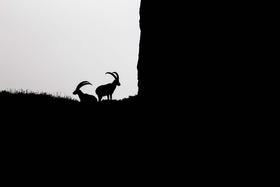
2. Geometric
Ibexes have a striking silhouette that is very photogenic. I like to play with it for composition when I photograph the animals in different positions. The strength of this approach is to show how elegant they are while eliminating any distracting details in the picture.
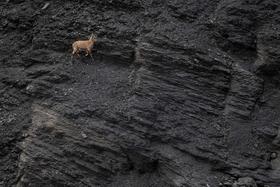
3. Black wall
Rocks are an integral part of the ibex habitat. They live either on granite rock, limestone or slate. For several years I had the image of an ibex on a black rock face in my head. And one day, with a lot of persistence, I observed this young ibex climbing next to me on this steep schist slope for almost a whole hour.
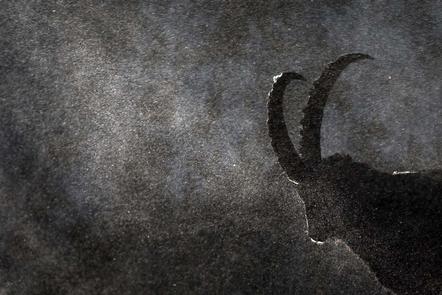
4. Tough conditions
Snow and wind are some of the harshest elements ibexes face all year round. On this day, I experienced spectacular conditions with snow flying everywhere illuminated by the midday sun.
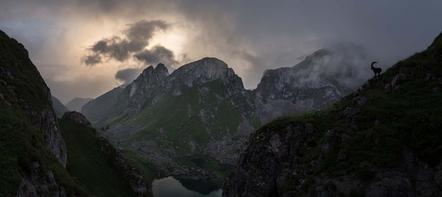
5. The call of the mountains
While enjoying an incredible sunset, I saw a magnificent male ibex approach and pause in front of the stunning mountain panorama. Twenty minutes and two hundred photos later, I decided to leave the animal at its vantage point while I returned to my tent with my head full of images.
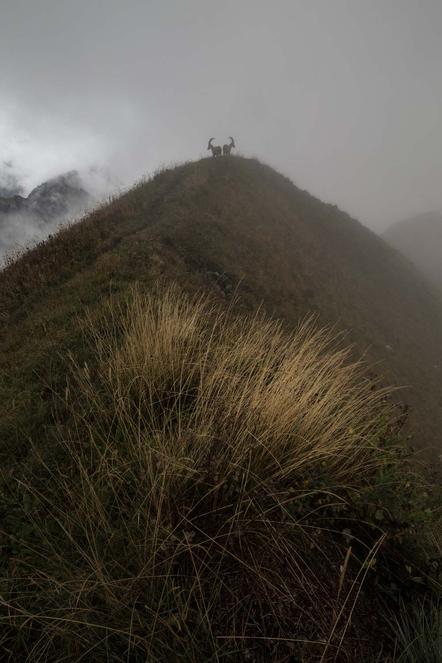
6. The summit
Changeable weather makes the high mountains unpredictable, but also mysterious and very attractive. Clouds and fog cover the peaks in ever different ways, making each scene unique. That's why I always prefer to be out in uncertain weather conditions, although that usually means getting very wet.
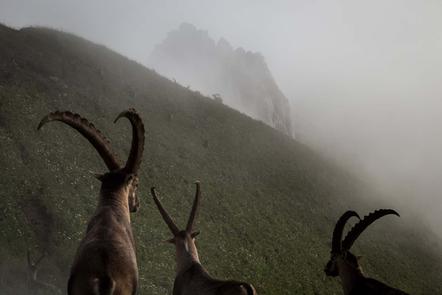
7. The spectacle
On warm days, male ibexes have a habit of retreating to cooler altitudes. There, it is not uncommon to see groups of more than 100 animals grazing, sleeping or engaging in harmless mock fights for most of the day. During this time, I can sit with them for hours, observe their various behaviours and take some pictures.
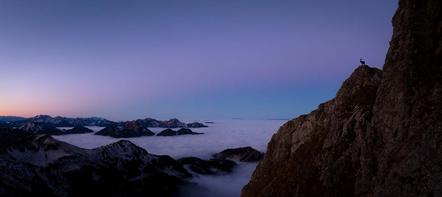
8. The guard
December is the ibexes' rutting season, certainly my favourite time of the year. Ice and snow begin to cover the ground, thick clouds pass by low and the days get shorter and shorter. Despite some fighting, it was very quiet that morning and I was lucky enough to see this old male looking at the landscape - outlined by a clear blue sky with no trace of aircraft at all, something I had never seen before the pandemic.
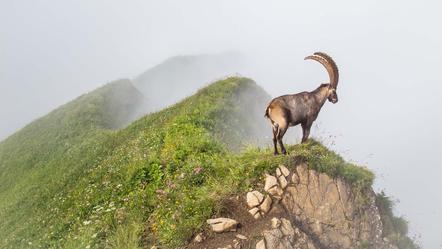
9. The king
Working with different lenses is part of my photographic approach, especially with subjects like the ibex, where long focal lengths are rarely necessary. I like to use medium focal lengths like a 50mm lens. It is very close to our human perception and therefore leads to realistic rendering of the scene.


